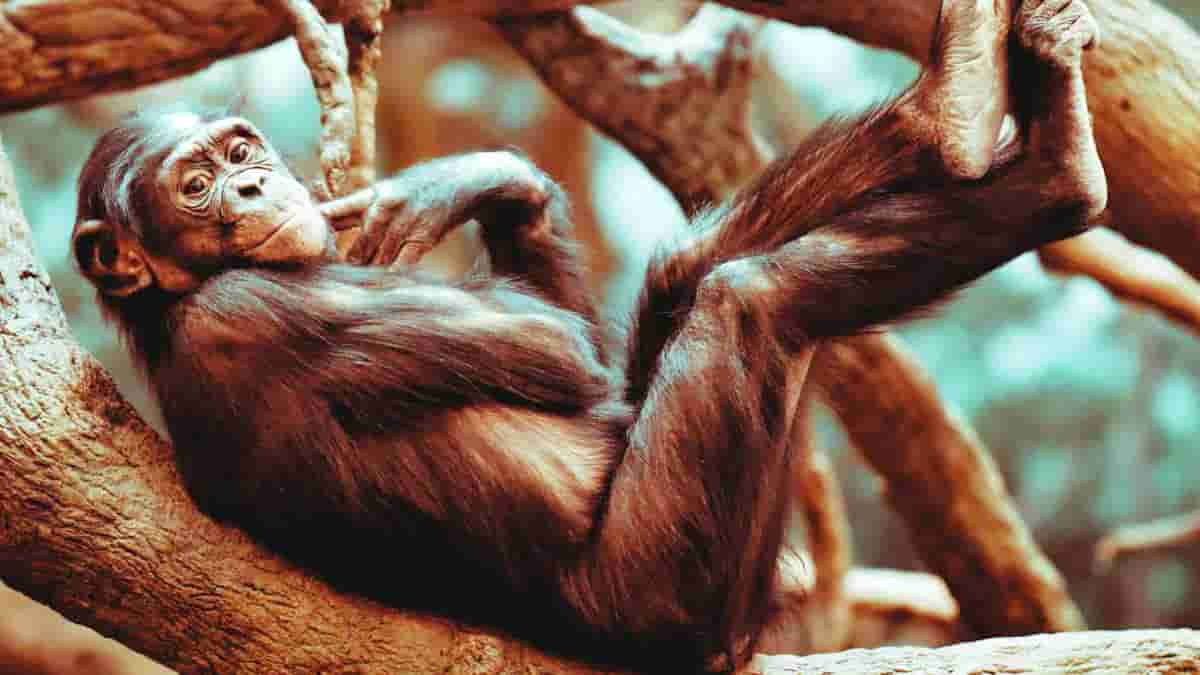According to a study from the University of St Andrews, humans retain an understanding of gestures made by other great apes even though we no longer use them ourselves. The discovery of great ape gestures was the first evidence of intentional communication outside of human language, and over 80 such signals have now been identified.
Many of these gestures are shared by non-human apes, including chimps and orangutans, which are distantly related. Despite the fact that humans are more closely related to chimps and bonobos, these ape gestures are no longer thought to exist in human communication.
Using an online game, researchers assessed people’s understanding of the ten most common chimp (Pan troglodytes) and bonobo (Pan paniscus) gestures. Over 5,500 people were asked to watch 20 short videos of ape gestures and choose the meaning of the gesture from four options.
Reversed Paradigm
Participants performed significantly better than chance would have predicted, correctly interpreting the meaning of chimp and bonobo gestures more than half of the time. Giving participants contextual information about what the apes in the video were doing increased their success rate in interpreting the meaning of the gesture only marginally.
Video playback experiments have traditionally been used to test language comprehension in non-human primates, but for the first time, this study reversed the paradigm to assess humans’ abilities to understand the gestures of their closest living relatives.
The findings imply that, while we no longer use these gestures, we may still have an understanding of this ancestral communication system.
Gesture In The Brain

Credit: Catherine Hobaiter CC-BY
Gestures are processed in the same human brain areas as speech and sign language, including the left inferior frontal gyrus (Broca’s area), the posterior middle temporal gyrus, the posterior superior temporal sulcus, and the superior temporal gyrus (Wernicke’s area).
Some scientists believe that these parts of the brain initially supported the pairing of gesture and meaning, but that as spoken language evolved in humans, they were adapted for a comparable pairing of sound and meaning.
The identification of Broca’s language region in early hominin fossil skull casts is a contentious issue. Still, both apes and monkeys have cortical areas that are similar in location and architecture to Wernicke’s and Broca’s areas in humans, and are most likely analogous to them.
The gestures of chimpanzees that previous researchers have observed seem to correspond to directive meanings, such as “stop that”, “move closer”, “follow me”, “groom me”, or “give me that food” (in both bonobos and chimpanzees, a strike across the mouth). Meanings can vary depending on the context.
Shared Gestures?
It’s still unclear, according to the authors, whether humans and other great apes can interpret meaningful signals due to our general intelligence, physical similarity, and shared social objectives, or whether our capacity to understand particular great ape gestures is inherited.
“All great apes use gestures, but humans are so gestural — using gestures while we speak and sign, learning new gestures, pantomiming etc. — that it’s really hard to pick out shared great ape gestures just by observing people,”
said study co-author Kirsty E. Graham.
By showing participants videos of common great ape gestures instead, the authors found that people can understand these gestures, implying that they may be part of an evolutionarily ancient, shared gesture vocabulary shared by all great ape species, including us.
The authors also include a link where people can participate in an online quiz version of the experiment (no data are collected).
References:
- Graham KE, Hobaiter C (2023) Towards a great ape dictionary: Inexperienced humans understand common nonhuman ape gestures. PLoS Biol 21(1): e3001939.
- Aboitiz F (2018) A Brain for Speech. Evolutionary Continuity in Primate and Human Auditory-Vocal Processing. Front. Neurosci. 12:174. doi: 10.3389/fnins.2018.00174
- Hobaiter C, Byrne RW. The meanings of chimpanzee gestures. Curr Biol. 2014;24(14):1596–1600
- Spocter MA, Hopkins WD, Garrison AR, et al. Wernicke’s area homologue in chimpanzees (Pan troglodytes) and its relation to the appearance of modern human language. Proc Biol Sci. 2010;277(1691):2165-2174. doi:10.1098/rspb.2010.0011
- Xu, J; Gannon, PJ; Emmorey, K; Smith, JF; Braun, AR (2009). Symbolic gestures and spoken language are processed by a common neural system. Proc Natl Acad Sci U S A. 106 (49): 20664–20669. Bibcode:2009PNAS..10620664X
Last Updated on August 14, 2023
